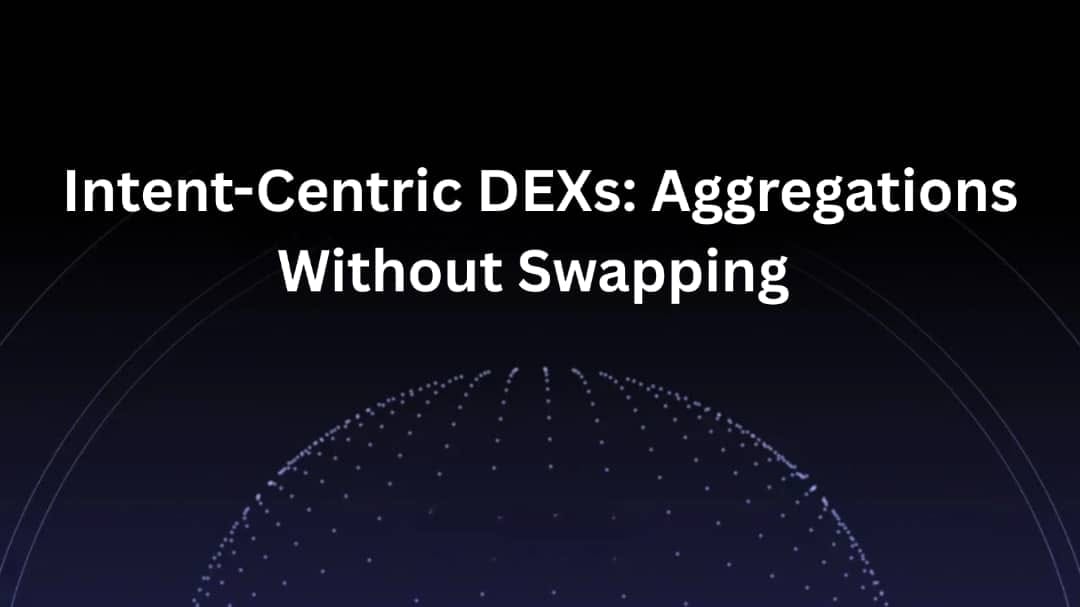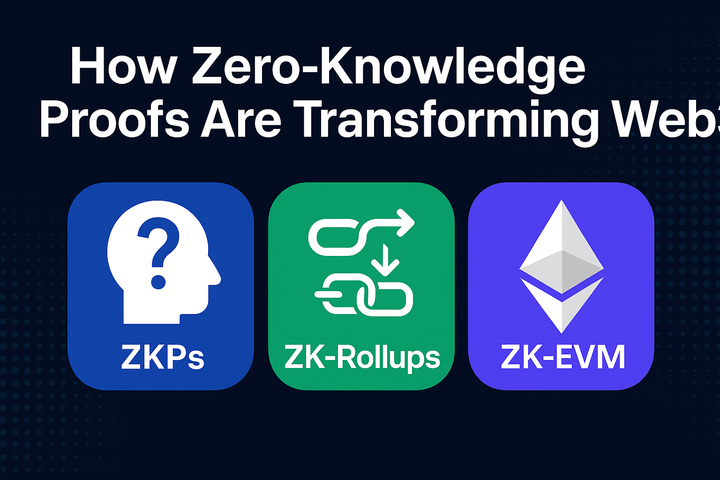Intent-Centric DEXs: Aggregators Without Swapping

Introduction
The decentralized finance (DeFi) landscape is rapidly evolving, with new innovations emerging to enhance user experience and streamline trading processes. One of the most intriguing developments is the rise of intent-centric decentralized exchanges (DEXs), which focus on user intent rather than traditional swapping mechanisms. This article delves into the concept of intent-centric DEXs, exploring their functionality, advantages, challenges, and the future of trading in the DeFi space.
1. Understanding Intent-Centric DEXs
1.1 What are Intent-Centric DEXs?
Intent-centric DEXs are platforms that prioritize the user's trading intent over the conventional model of asset swapping. Instead of requiring users to specify exact tokens for trading, these DEXs allow users to express their intent, such as "I want to buy a specific amount of a token" or "I want to sell at a certain price." The DEX then automatically finds the best available liquidity across various sources to fulfill that intent.
1.2 Key Features of Intent-Centric DEXs
- User -Centric Design: By focusing on user intent, these DEXs simplify the trading process, making it more accessible for users who may not be familiar with the intricacies of token swaps.
- Aggregated Liquidity: Intent-centric DEXs aggregate liquidity from multiple sources, ensuring that users receive the best possible prices and minimal slippage.
- Dynamic Order Execution: These platforms can dynamically execute orders based on real-time market conditions, optimizing trade execution and enhancing user satisfaction.
1.3 Examples of Intent-Centric DEXs
- 1inch: A well-known DEX aggregator that allows users to input their trading intent and automatically finds the best prices across various DEXs.
- Matcha: A platform that focuses on providing users with the best prices by aggregating liquidity from multiple sources while allowing users to express their intent.
- Paraswap: Another DEX aggregator that emphasizes user intent, offering a seamless trading experience by sourcing liquidity from various DEXs.
The Mechanics of Intent-Centric DEXs
How Intent-Centric DEXs Work
Intent-centric DEXs operate through a series of steps that facilitate user trading:
- User Input: Users specify their intent, such as the amount they wish to buy or sell, without needing to select specific tokens.
- Liquidity Aggregation: The DEX aggregates liquidity from various sources, including other DEXs, liquidity pools, and market makers.
- Order Matching: The platform matches the user's intent with the best available liquidity, ensuring optimal execution.
- Execution and Settlement: Once a match is found, the trade is executed, and the user receives the desired tokens or liquidity.
1.4 Benefits of Intent-Centric DEXs
- Enhanced User Experience: By simplifying the trading process, intent-centric DEXs make it easier for users to engage with DeFi, attracting a broader audience.
- Reduced Complexity: Users no longer need to navigate complex token pairs or understand the intricacies of liquidity pools, making trading more intuitive.
- Improved Price Discovery: Aggregating liquidity from multiple sources enhances price discovery, allowing users to access better rates and lower slippage.
2. Challenges of Intent-Centric DEXs
1. Technical Complexity
While intent-centric DEXs offer numerous advantages, they also face technical challenges:
- Integration with Multiple Liquidity Sources: Aggregating liquidity from various DEXs and liquidity pools requires sophisticated algorithms and robust infrastructure.
- Real-Time Data Processing: To provide users with the best prices, intent-centric DEXs must process vast amounts of data in real-time, which can be resource-intensive.
2. Security Concerns
As with any DeFi platform, security is a paramount concern for intent-centric DEXs:
- Smart Contract Vulnerabilities: Intent-centric DEXs rely on smart contracts to execute trades, making them susceptible to exploits if not properly audited.
- Liquidity Risks: Aggregating liquidity from multiple sources can expose users to risks associated with less reputable platforms.
3. Regulatory Considerations
As the DeFi space matures, regulatory scrutiny is likely to increase. Intent-centric DEXs must navigate the evolving regulatory landscape to ensure compliance with local laws and regulations.
3. The Future of Intent-Centric DEXs
Trends to Watch
- Increased Adoption: As more users seek simplified trading experiences, the adoption of intent-centric DEXs is expected to grow, driving innovation in the space.
- Enhanced Interoperability: Future intent-centric DEXs may focus on interoperability, allowing users to trade across different blockchains seamlessly.
- Integration with Traditional Finance: As DeFi continues to gain traction, intent-centric DEXs may explore partnerships with traditional financial institutions to bridge the gap between DeFi and traditional finance.
4. The Role of Projects like Anoma
4.1 Anoma's Vision
Anoma is at the forefront of the intent-centric DEX movement, aiming to create a marketplace where users can declare their trade intents without the need for traditional swapping. This innovative approach allows for a more flexible and user-friendly trading experience.
4.2 Key Features of Anoma
- Decentralized Counterparty Discovery: Anoma facilitates direct, trustless interactions between users, eliminating the need for intermediaries.
- Multi-Chain Atomic Settlement: This feature streamlines asset exchanges across different blockchains, allowing users to execute trades seamlessly.
- Privacy by Design: Anoma incorporates privacy features, ensuring that user intents remain confidential while still allowing for efficient trade execution.
4.3 Impact on the DeFi Ecosystem
Anoma's approach to intent-centric trading has the potential to reshape the DeFi landscape by:
- Enhancing User Engagement: By simplifying the trading process, Anoma can attract a wider range of users, including those who may be intimidated by traditional DEXs.
- Promoting Interoperability: Anoma's multi-chain capabilities encourage collaboration between different blockchain ecosystems, fostering a more interconnected DeFi environment.
- Driving Innovation: As more projects adopt intent-centric models, the DeFi space is likely to see increased innovation and competition, ultimately benefiting users.
Conclusion
Intent-centric DEXs represent a significant evolution in the decentralized trading landscape, prioritizing user intent and simplifying the trading process. By aggregating liquidity and enhancing user experience, these platforms are poised to attract a broader audience and drive innovation in the DeFi space. As the ecosystem continues to evolve, intent-centric DEXs will play a crucial role in shaping the future of decentralized trading.
The emergence of intent-centric DEXs, exemplified by projects like Anoma, marks a significant shift in the way users interact with decentralized trading platforms. By prioritizing user intent and simplifying the trading process, these DEXs are set to revolutionize the DeFi landscape, making it more accessible and efficient for all participants. As the ecosystem continues to evolve, the role of intent-centric DEXs will be crucial in shaping the future of decentralized finance.



Comments ()